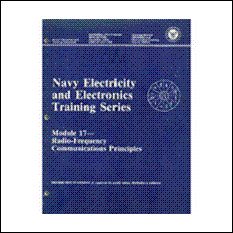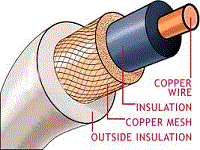Current and Voltage
Current and Voltage on an Antenna
A current flowing in a wire whose length is properly related to the rf produces an electro magnetic field. This field is radiated from the wire and is set free in space.
The principles of radiation of electromagnetic energy are based on two laws:
1. A MOVING ELECTRIC FIELD CREATES A MAGNETIC (H) FIELD.
2. A MOVING MAGNETIC FIELD.
CREATES AN ELECTRIC (E) FIELD.
In space, these two fields will be in phase and perpendicular to each other at any given time. Although a conductor is usually considered present when a moving electric or magnetic field is mentioned, the laws that govern these fields say nothing about a conductor. Therefore, these laws hold true whether a conductor is present or not.
The illustration below shows the current and voltage distribution on a half-wave (Hertz) antenna. In view A, a piece of wire is cut in half and attached to the terminals of a high-frequency ac generator. The frequency of the generator is set so that each half of the wire is 1/4 wavelength of the output. The result is a common type of antenna known as a DIPOLE.

Current and voltage distribution on an antenna.
At a given time the right side of the generator is positive and the left side negative. Remember that like charges repel. Because of this, electrons will flow away from the negative terminal as far as possible, but will be attracted to the positive terminal.
View B shows the direction and distribution of electron flow. The distribution curve shows that most current flows in the center and none flows at the ends. The current distribution over the antenna will always be the same no matter how much or how little current is flowing.
However, current at any given point on the antenna will vary directly with the amount of voltage developed by the generator. One-quarter cycle after electrons have begun to flow, the generator will develop its maximum voltage and the current will decrease to 0. At that time the condition shown in view C will exist.
No current will be flowing, but a maximum number of electrons will be at the left end of the line and a minimum number at the right end. The charge distribution view C along the wire will vary as the voltage of the generator varies. Therefore, you may draw the following conclusions:
1. A current flows in the antenna with an amplitude that varies with the generator voltage.
2. A sinusoidal distribution of charge exists on the antenna. Every 1/2 cycle, the charges reverse polarity.
3. The sinusoidal variation in charge magnitude lags the sinusoidal variation in current by 1/4 cycle.

















